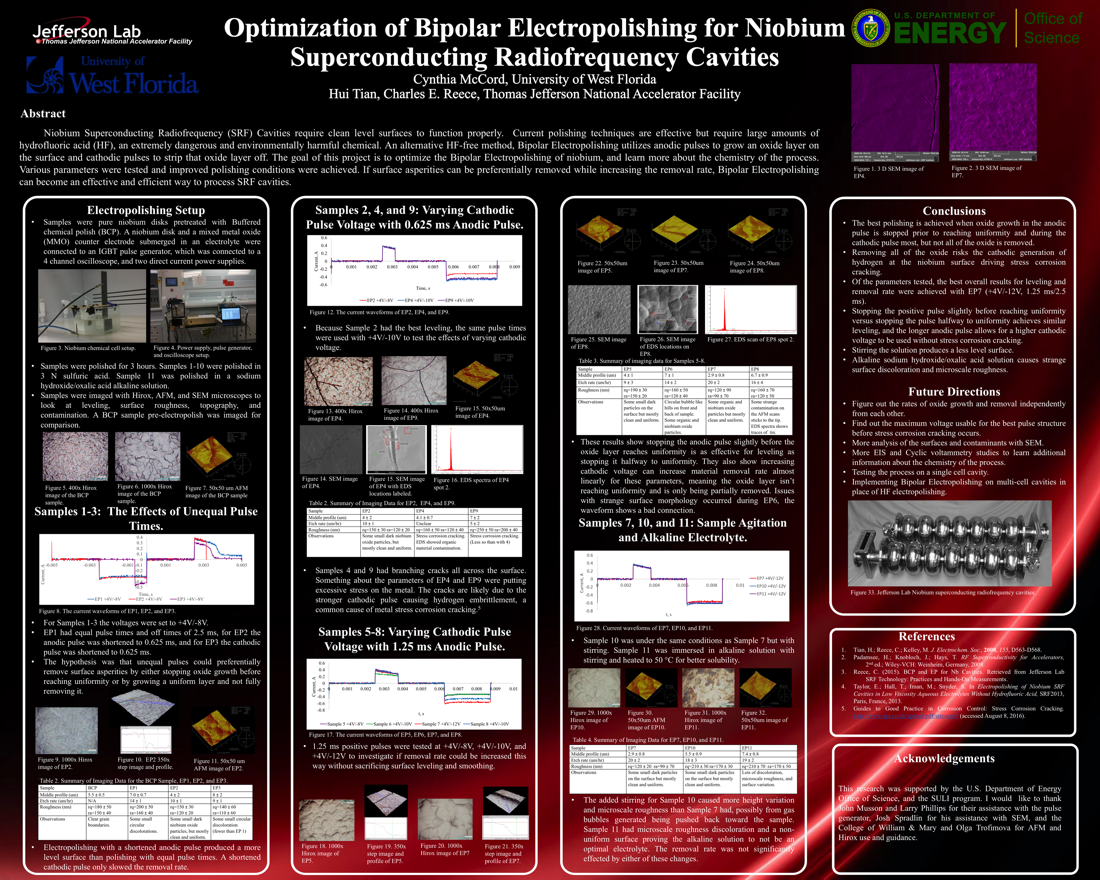Undergraduate Research at Jefferson Lab
Optimization of Bipolar Electropolishing for Niobium Superconducting Radiofrequency Cavities
Student: Cynthia McCord
School: University of West Florida
Mentored By: Hui Tian
Niobium Superconducting Radiofrequency (SRF) Cavities require clean level surfaces to function properly. Current polishing techniques are effective but require large amounts of hydrofluoric acid (HF), an extremely dangerous and environmentally harmful chemical. An alternative HF-free method, Bipolar Electropolishing utilizes positive electrical pulses to grow an oxide layer on the surface and negative pulses to strip that oxide layer off. The goal of this project is to optimize the Bipolar Electropolishing of niobium, and learn more about the chemistry of the process. Various parameters were tested and improved polishing conditions were achieved. If surface asperities can be preferentially removed while increasing the removal rate, Bipolar Electropolishing can become an effective and efficient way to process SRF cavities.

Citation and linking information
For questions about this page, please contact Education Web Administrator.
